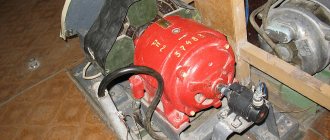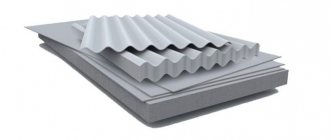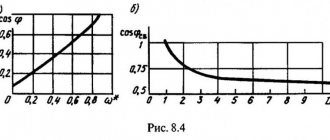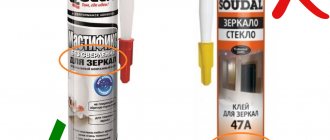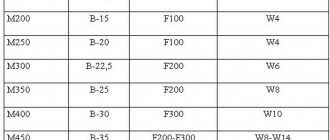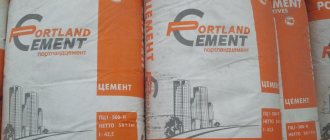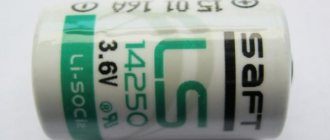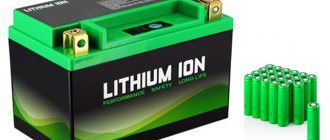What is it and its purpose
Heat-resistant , fire-resistant concrete , as defined by GOST 25192-2012, which establishes classification and technical requirements for all types of concrete, is concrete whose purpose is to operate at high temperatures in the range of 800-1800 ℃.
On this topic ▼
Fire retardant plaster
Application for structural processing
This type of building material, specific for its purpose and application, differs from other types of concrete mixtures not only in its resistance to open fire and prolonged exposure to high-temperature heat flows, but also in the fact that in these harsh conditions it does not reduce the main operational parameters - preservation of strength, absence of deformation, surface and deep destruction structures.
This is achieved by adding various binders (special additives) to the base of fire-resistant cements that have undergone high-temperature firing during production. Therefore, during the hardening process of refractory concrete, a strong structure is formed, similar to natural stone, which does not require firing before use, but is ready for fire and thermal loads.
Accordingly, this material is not used in the construction of standard buildings, but is used in the form of commercial fire-resistant concrete mixtures, finished products - fire-resistant blocks, monolithic structures in the construction of particularly important facilities, including transport infrastructure, for example, road and railway tunnels, underground utilities .
It is also used in the construction of industrial equipment operating in a high-temperature range - for monolithic lining of thermal power plant boilers, blast furnaces, open-hearth furnaces, and mineral materials roasting units; for lining ladles for transportation, pouring of cast iron, steel, and other molten metals.
Kinds
by physical properties
According to physical properties and areas of application, refractory concretes are divided into two types:
- Heavy or design ones, used for casting building structures, hearth bases of furnaces, boilers.
- Lightweight (cellular) or heat-insulating, used for lining walls, vaults of furnace equipment, shotcreting the internal surface of chemical industry apparatus.
from operating temperature
Depending on the operating, peak operating temperature, three types of fire-resistant concrete are distinguished:
- Heat resistant with operating temperature up to 1000℃, withstand short-term heating up to 1500℃.
- Fireproof, operating in the temperature range from 1500 to 1800 ℃.
- Highly fireproof with operating temperature up to 1800℃, withstand peak heating up to 2300℃.
Domestic products in the form of dry ready-made mixtures are represented on the market by the following brands:
- ASBS – aluminosilicate refractory concrete.
- SBK – with corundum additives.
- ШБ-Б - with fireclay fire.
- “BOSS-200” is a concrete fireproof dry mixture.
- TIB – thermal insulating concrete.
- VGBS – with a high content of fire-resistant aluminous cements.
- SSBA is a dry concrete reinforcing mixture.
- SBS is a self-leveling concrete mixture.
From foreign manufacturing companies:
- Pro cast 12 – poured concrete for blast furnaces.
- Calcestruzzo refrattario.
- Promacret-PF.
- Rath CARATH.
Classification
Heat-resistant concrete solved the problem of the reduced strength characteristics of traditional cement, which collapses at elevated temperatures. Various types of refractory composition are known, including special modifiers that increase the temperature resistance of the massif to more than 1800 °C.
Heat-resistant composites are classified according to various criteria:
- structure that determines the temperature regime of operation;
- scope of application according to which the purpose of the material is determined;
- types of components used as filler;
- binders used.
Refractory concrete for furnaces, as well as other objects operating at elevated temperatures, is divided into the following types:
- Heat-resistant, resistant to constant temperatures up to 800 °C, but can withstand short-term temperature increases up to 1.5 thousand °C.
- Heat-resistant, maintaining integrity during constant heating up to 1 thousand ° C with an increase in the thermal threshold to 1.8 thousand ° C.
- Fire-resistant composites used in extreme conditions at temperatures above 1.8 thousand ° C.
Depending on their purpose, refractories are divided into the following types:
- structural materials that are subject to heating simultaneously with the perception of significant loads;
- thermal insulation composites used to provide reliable thermal insulation of heated structures and structures.
Determines the high performance characteristics of refractory concrete composition. Let's consider what components are used in the manufacture of refractories.
Composition and properties
The basis of fire-resistant concrete is fire-resistant cement, which is a binding element that holds all other components together into a homogeneous, integral structure.
There are:
- Portland cements of high grades.
- The base is made of Portland cement with the addition of ash and metallurgical slag, which has high viscosity.
- Alumina cement base with the addition of silicates (liquid glass).
- Aluminous cement (AC) with an aluminum oxide content of up to 55%, the melting point of which reaches 1500 ℃.
- High-alumina cement (HAC), in which the Al2O3 content reaches 70%, with a melting point of up to 1800 ℃.
Application of refractory concrete in metallurgy
We most commonly use VHC, which is a hydraulic binder in the production of both heavy and light (cellular) concrete with high resistance to fire and high heat.
Aluminous cements are very common components of dry ready-mixes for producing fire-resistant concrete: shotcrete, masonry mortars. Their positive properties include:
- Rapid increase in strength - up to 70 MPa after pouring and gunning.
- Heat release during hardening, which allows work to be carried out at subzero temperatures without heating.
- High density of refractory concrete obtained on their basis - up to 2 thousand kg/m3.
- Resistance to aggressive environmental influences, which allows their use as a protective layer in chemical production equipment with high process temperatures.
- When exposed to an open flame and high-temperature heat flows, concrete made from aluminous grades of refractory cement is sintered into a homogeneous ceramic mass.
On this topic ▼
Fire protection of metal structures
Compositions and methods
The second integral component of refractory concrete is non-combustible filler , which is used as:
- Fireclay and magnesite bricks.
- Magnesite, andesite.
- Chromite ore.
- Metallurgical slags.
- Ash from thermal power plants.
- Basalt, diorite, corundum.
- Volcanic pumice.
- Fired kaolin clay.
During production and preparation for use, all types of fillers are crushed to the fractions required by standards and undergo heat treatment, so their properties under the influence of fire and strong heating are unchanged, just as there are no chemical or physical changes that affect the integrity and strength of the structure of heat-resistant concrete.
Perlite, vermiculite, and expanded clay are added to the formulation as plasticizers for light (cellular) types of refractory concrete.
What is heat-resistant concrete
Heat-resistant concrete is a special type of building material that does not lose strength and key performance characteristics under long-term exposure to extremely high temperatures. There are various compositions of such mixtures, taking into account the ability to withstand exposure to open fire and heating in the range of 750-1800 degrees.
The main distinctive property of heat-resistant concrete is the presence in the composition of a large proportion of porous additives and components of fine fractions. In addition, sifted rocks with a low quartz content are introduced into refractory materials.
When the composition is very hot, the main inconvenience is associated with intense loss of moisture, as a result of which the concrete becomes covered with cracks and loses its cohesive strength. But since the alumina elements in the composition have small particle sizes, it is possible to maintain a sufficient percentage of moisture in the mixture - the properties of strength and ductility remain at the required level, regardless of the degree of heating.
In addition, when producing concrete with the addition of alumina components, it is possible to achieve increased fire resistance due to the transition of the material to the state of ceramics under long-term exposure to open fire.
Performance characteristics
The main characteristics of refractory concrete, in addition to high fire resistance:
- Reliable thermal insulation.
- High strength, indestructibility even with sudden temperature changes.
- Strengthening properties during operation.
- There is no need for firing after finishing pouring and shotcrete work.
- Reduce costs when using ready-made mixtures, which can be easily brought to the required consistency directly at the construction site.
The question often arises - how to make fire-resistant concrete with your own hands?
This is necessary in order to make a stationary barbecue oven, tandoor or fireplace out of it.
Despite the advice of “sofa gurus” from the Internet, it is not enough to add special fire-resistant additives to a regular concrete mixture, and it is also impossible to independently select the necessary ingredients according to the factory recipe for fire-resistant concrete. In any case, the resulting material will resemble the desired one only in name, without having the required performance characteristics, but it is still possible to make heat-resistant concrete at home.
Installation of a furnace using refractory concrete
To do this you need:
- Purchase a factory-produced dry mixture with the necessary properties.
- To prepare the filling and masonry mortar, use exactly the amount of water per 1 kg of mixture as indicated in the instructions for use.
- For mixing, you need to use a paddle concrete mixer with an electric drive, since it is impossible to manually obtain a uniform consistency of the concrete solution.
- When drying, it is necessary to spray the surface layer with water to uniformly hydrate the concrete structure and increase its strength.
- Before the established deadlines for final hardening, you should not heat or operate stoves and fireplaces where fire-resistant concrete was used for pouring and masonry.
In addition, most ready-made refractory mixtures have short shelf life, so it is worth purchasing them shortly before use.
Requirements of regulatory documents (standards)
Set out in the following state standards:
- GOST 28874-2004 - on the classification of refractories, defining a refractory concrete mass as a mixture of refractory cement, fillers, additives and liquid, ready for use.
- GOST R 52541-2006 – on regulations for the preparation of refractory concrete samples for certification tests.
- GOST 24830-81 – on the use of ultrasonic method for quality control of refractory concrete products.
In addition, from April 1, 2019, GOST 34470-2018 will come into force, which will establish technical conditions for refractory concrete.
Use of refractory concrete
The composition of refractory concrete includes specialized additives and mixtures that give the material greater strength when exposed to high temperatures.
During operation, heat-resistant concrete
It also acquires significant resistance to heat. A good positive quality is the fact that refractory concrete does not require very expensive special firing, and therefore is widely used in construction.
In terms of functionality, it does not differ from ordinary concrete and can provide complete safety and protection of your structure from overheating. Moreover, heat-resistant concrete can be used as a thermal insulation material.
Depending on the area of use, cellular, light or dense concrete
. A material is considered not heavy when its dry weight does not exceed 1500 kg/m3. To the base raw materials of slag Portland cement, Portland cement, aluminous cement or liquid glass, finely ground impurities are added, such as broken refractory bricks, lump fireclay, pumice, broken magnesite bricks, andesite and others. Additives help the hardening of heat-resistant concrete and form its heat-resistant qualities.
Heat-resistant concrete with phosphate and silicate binders
In other words, there is specialized heat-resistant concrete. This is when, in addition to the alumina-cement binder, a silicate or phosphate base is added to its composition. Heat-resistant concrete with a phosphate binder adheres better to other refractories, hardens faster and has greater strength when compared with concrete using alumina cement. The hardening agent is cement, talc, magnesium oxide. The filling is high-temperature materials: corundum, broken corundum and high-alumina refractories, chromites and chromium magnesites.
Heat-resistant silicate-bonded concrete is used in acidic environments. To increase hardness, sodium silicate, sodium fluoride, and phosphates are added.
The filler is quartz and high-silica fireclay. Due to its very high resistance to acids, heat-resistant silicate-bonded concrete is usually used for smoke removal in pickling baths, tanks, and pipe linings.
If you have come to the conclusion to build a barbecue, fireplace or stove in your house from refractory concrete with your own hands, then to save money during construction you can easily do it yourself. To do this, use a dry prepared mixture or mix the components using a special technology similar to the preparation of simple concrete.
Factory mixtures are made according to all standards and can ensure product quality. When using a dry prepared mixture, carefully read the instructions on the package and strictly follow them.
Production technology of refractory concrete
is divided into two options: if the structure will be exposed to moisture, do not add liquid glass; if the environment is acidic and dangerous, do not use Portland cement.
Set up the work site, make sure water is readily available and tools are clean.
Production of heat-resistant concrete
The typical composition of heat-resistant concrete includes: sand, gravel, slaked lime, refractory cement. Based on this, the ratios are 3:2:2:0.5. Pure filtered water requires 7.7 liters for 22.5 kg of mixture. Use a shovel to thoroughly mix the sand and gravel in a wheelbarrow or use a concrete trowel.
Then pour the mixture with water until it reaches the required consistency. Transfer the mixture to the finished mold or casting, level the surface with a spatula and remove excess concrete. The faster you work, the denser the solution will be.
To remove voids and get rid of air bubbles in the heat-resistant mixture, use a punch or use a jackhammer. Insert a drill into the wood part of the mold and work for one minute. Next, the mixture, which is already ready for use, needs to be covered with film and left for several days, sometimes sprinkled with water. Move the finished fire block indoors and then leave it for 25 days.
To make castings, use plywood. To easily remove the heat-resistant block, polymer ethylene is placed on the bottom of the mold, or at most greased silicone, which will not interfere with the evaporation of water from the surface of the block.
Application area
Fire-resistant, refractory concrete is in demand in the following sectors of industrial production and construction:
- At ferrous and non-ferrous metallurgy enterprises during the construction and repair of blast furnaces, open-hearth furnaces, induction furnaces for smelting aluminum, copper, zinc; for lining transport, pouring ladles, casting molds.
- As a carrier of chemical catalysts for technological processes for processing hydrocarbon raw materials, in organic synthesis.
- For lining boilers of thermal and technological thermal power plants.
- For thermal insulation of hearths, housings, vaults of industrial equipment.
- For stoves, fireplaces as a filling, masonry mortar, including when installing chimneys, pipes, fire-prevention cuts, indentation.
- In the production of small-sized refractory products.
And also in other cases, when concrete structures are subject to requirements for resistance to fire, constant high heat, temperature changes, while maintaining the strength, physical, chemical stability of the material used in such harsh conditions.


